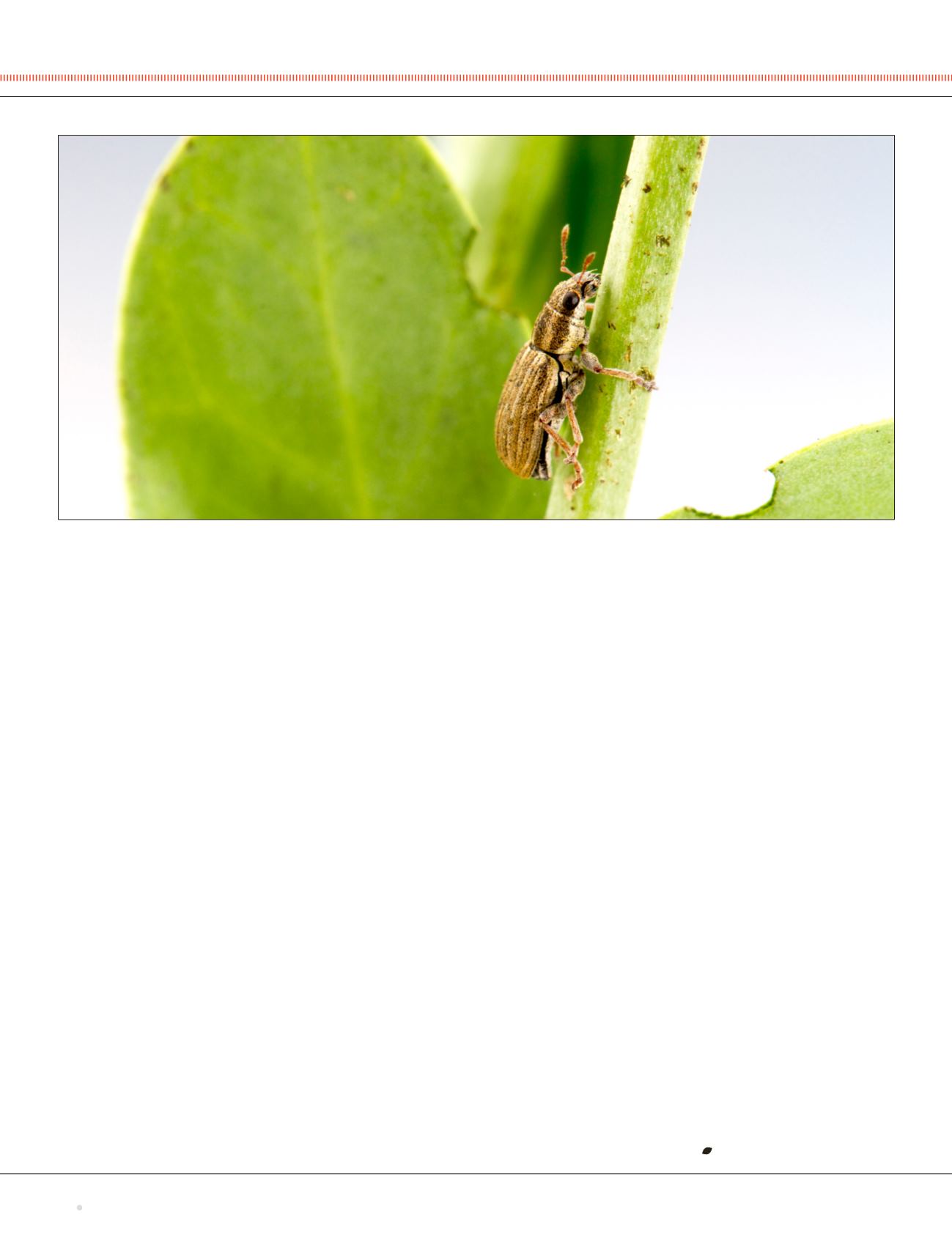
Spring
2018
Grains
West
30
consultation with industry and no heads-
up on risk issues being considered,” said
Petelle. “Then, in June, it was proposed
that all agricultural uses be removed for
the product. Growers are looking at their
toolbox and saying that if this pattern
continues, they won’t have any tools left
to protect their crops.
“Our members reinvest 10 to 12 per
cent of gross sales back into research
and development. The industry is
constantly innovating, but the regulatory
environment must be predictable and
transparent to continue to do so.”
The chemicals involved in recent PMRA
re-evaluations may differ in name and
application, but Petelle said the common
threads are the big-picture implications
for Canada at home and abroad.
“The issues around the re-evaluation
process have garnered attention from
almost all sectors of Canadian agriculture
because of the types of compounds
involved and their importance. Whether
you’re a western Canadian pulse
grower, a wheat farmer on the Prairies or
someone growing fruits and vegetables
for the Toronto market, all face the task
of battling pests and need a substantial
pool of products to help them do that.”
As pressing as the problem may be
within our boundaries, Rosaasen said
it’s amplified on the world stage. “The
fact that the United States has access to
a greater number of products results in
a competitive disadvantage, especially
when no alternatives exist for control or
suppression of certain pests. The larger
concern is the lack of harmonization
of regulatory bodies and, in some
instances, differences in maximum
residue limits (MRLs). For instance,
the PMRA’s proposed revocation
of lambda-cyhalothrin included a
revocation of MRLs.”
The reality, according to Rosaasen, is
that Canada is losing crop protection
products faster than new ones are
being developed. “We continue to see
consolidation in the large crop innovation
companies and there are very few
remaining that are doing research and
development into new products. Many
companies are simply reformulating and
repackaging off-patent products and
are not engaged in research to bring
new products or modes of action to
commercialization.”
Identifying the problem is one thing;
it’s the solutions that can be hard to
come by. For Petelle, it starts with finding
common ground. “This is not a matter
of ‘us versus them.’ Producers are not
against the PMRA, nor are we trying to
be critical of their personnel. They are
a highly respected agency, and we just
want to encourage elected officials to
give them the funding and the tools to do
their job as effectively as possible, with
the most robust data that we can muster.”
In spite of differences in perspective
on the problem, both sides agree that
the PMRA’s job is a vital one. “Health
Canada’s top priority is the health of
Canadians and their environment,” said
Gagnon. “This mandate is fulfilled by
re-evaluating registered pesticides and
ensuring that they continue to meet
modern scientific standards.”
From Petelle’s perspective, “our
industry shares the same goals as the
PMRA. We want to protect the well-
being of people and the planet while
supplying effective tools for farmers to
grow safe, healthy food.”
Given the stakes involved in finding the
best possible approach for re-evaluation
of pesticides, there’s another point on
which all parties can agree: failure is not
an option.
Farmers across the country require a substantial pool of pest-control products to effectively manage insects such as the the pea leaf weevil.








